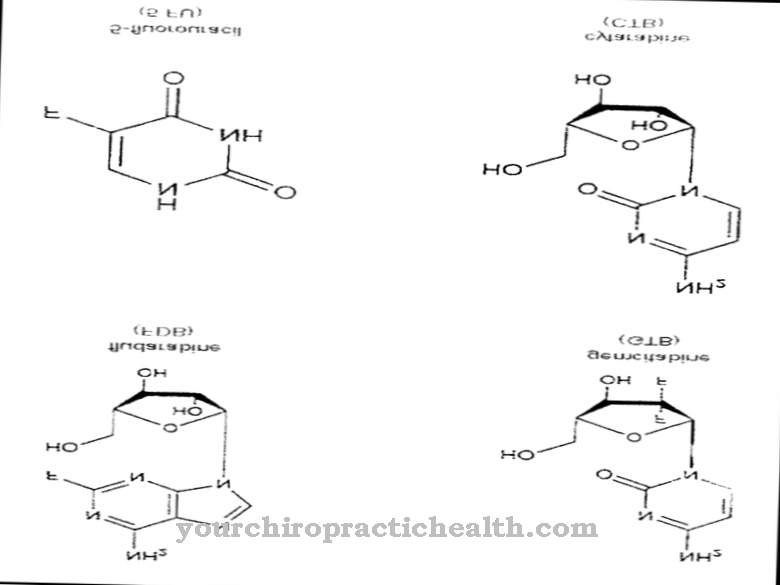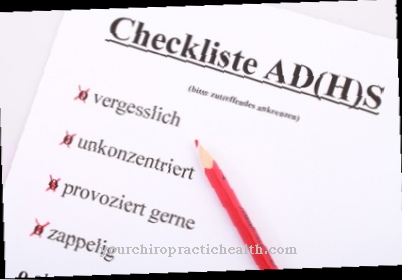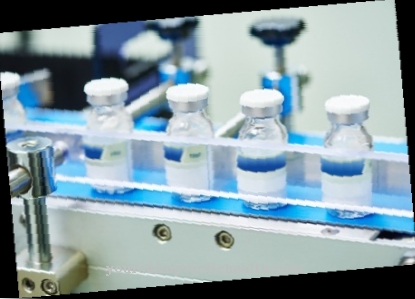Anyone who suffers from a worm disease perishes Diethylcarbamazine not around. The active ingredient is so important that the WHO (World Health Organization) added it to the list of essential medicines. This is not surprising, since a good 200,000 people still die each year from worm diseases.
What is Diethylcarbamazine?

Diethylcarbamazine is chemically a piperazine derivative. It works against certain types of parasitic worm infestation and is therefore classified as a member of the anthelmintic group. It is always administered as citrate.
Diethyl carbamazine citrate is a white, crystalline powder with a melting point of approx. 138 ° C. It is very soluble in water, but only slightly soluble in alcohol (1 g in 35 ml). It absorbs humidity relatively quickly. The active ingredient was first patented in 1949 by American Cyanamid.
Diethylcarbamazine is circulating under the trade names Hetrazan®, Carbilazine®, Caricide®, Cypip®, Ethodryl®, Notézine®, Spatonin®, Filaribits® and Banocide Forte®. The usual forms of administration are tablets of 50 mg or suspensions of 24 g / ml.
Pharmacological effect
Diethylcarbamazine After ingestion, it is almost completely absorbed through the intestines and is distributed in all parts of the body except the fatty tissues.
The maximum blood concentration is reached after 1-2 hours. How the molecule works against the worms is not fully understood; one assumption is that diethylcarbamazine acts like nicotine on the central nervous system of the parasites and thus paralyzes them.It is also assumed that the surface structure of the worms is changed so that the body's own phagocytes can more easily recognize and eliminate them.
The active ingredient is processed quickly and excreted mainly through the kidneys. In the first 24 hours after ingestion, 70% of the dose is already detected in the urine, 10-25% of which in unchanged form.
Medical application & use
Basically can Diethylcarbamazine can only be used against certain types of worms. These are so-called filariae, which belong to the group of roundworms (nematodes). These parasites attack humans as hosts, but do not multiply in them - one speaks of an infestation. The largest area of application is loiasis, a tropical worm disease in humans caused by the filaria loa loa.
According to WHO estimates, around 13 million people around the world are infected by it. Diethylcarbamazine can be used here both in temporary prevention (prophylaxis) and in treatment.
The drug was also of interest to dog owners because it works against the early larval stages of Dirofilaria immitis. This roundworm is transmitted by mosquitos and affects the dog's heart, where the 20-30 cm long, adult heartworms develop. However, diethylcarbamazine-based preparations are no longer permitted for animals in Germany.
In onchocerciasis, effectiveness has only been described against microfilariae, the very early larval stages of nematodes. The disease occurs in the tropical regions of Africa and America and is caused by filariae of the species Onchocerca volvulus. In around 10% of cases it leads to blindness, the so-called river blindness.
The WHO recommends, among other things, the administration of diethylcarbamazine in combination with praziquantel to combat worm diseases in humans. This allows a wide range of worms to be recorded - this is so important because it is often not possible to precisely determine the pathogen or pathogens. Diethylcarbamazine is not administered in the case of impaired functioning of the kidneys (renal insufficiency) and urinary alkalosis.
Risks & side effects
Characteristic side effects of Diethylcarbamazine are disorders and overreactions of the immune system, which occur particularly in the treatment of onchocerciasis. These include itching, fever and severe headaches. Other side effects are nausea, vomiting, feeling of pressure in the abdominal area, dizziness and tiredness.
Difficulty breathing, coughing, fast heartbeat (tachycardia) and proteinuria (increased protein excretion in the urine) have also been reported. All of these symptoms can be explained by the skyrocketing concentration of toxic waste products from the killing and decomposition of the worms. The side effects appear a few hours after administration, but usually disappear after about five days.



























